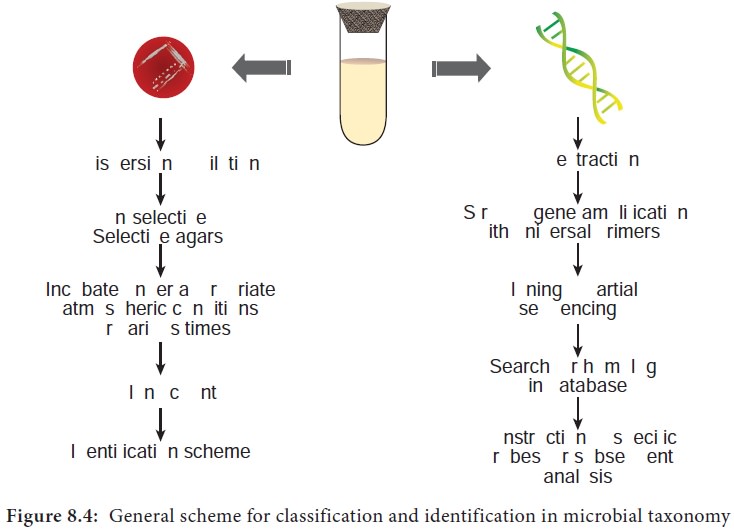Chapter: 11th Microbiology : Chapter 8 : Microbial Taxonomy
Taxonomic Systems
Taxonomic Systems
Classical Taxonomy
Classical taxonomy is a method of classification based on
morphology, physiology, biochemical and ecological characteristics of the
microorganisms.
Morphological Characteristics: The structural
characteristics are the usual tools which help in classification. Cell
morphology gives little information
about phylogenetic relationship. The first step in identification of bacteria
is differential staining.
Physiological and metabolic
characteristics: These characteristics are useful because they are directly
relatedtonatureandactivityofmicrobial enzymes and transport protein. Since
proteins are gene products, analysis of
these characteristics provides
an indirect comparison of microbial genomes.
Biochemical characteristics: Enzy-matic activities
are widely used
to differentiate bacteria. Bacteria can be separated into separate
species by various biochemical tests. Example:
Carbohydrate fermentation ability of bacteria.
Ecological characteristics: Many properties are
ecological in nature since they alter the relation of
microorganism to their environment. Microorganisms living in various parts of the
human body markedly differ from one another
and from those growing in freshwater, terrestrial and
marine environments.
Prokaryotes have only a few structural characteristics and these
characteristics are subject to rapid change due to change in environment. In
classifying prokaryotes, metabolic reactions, genetic relatedness and other
specialized properties are used (Figure 8.4).

Numerical Taxonomy
The objective classification system deals with the grouping by
numerical methods of taxonomic units based on their character and does not use
subjective evaluation of their properties. To be more objective about grouping
bacteria, the scientists determine many characteristics (usually 100 to 200)
for each strain studied, giving equal weightage for each character. Then by
using computer %similarity is calculated (%S of each strain to every other strain). For any two strains,
this is

where, NS is the number of characteristics that are the same (positive or negative) for the two strains, and ND is the number of characteristics that are different. Those strains having a high %S to each other are placed into groups; and those groups having a high %S to each other are in turn placed into larger groups. Numerical taxonomy also yields classification that has a high degree of stability and predictability.
Molecular Taxonomy
Molecular techniques in the field of biology has helped to
understand genetic relationship between the numbers of different taxonomic categories.
DNA and protein sequencing, immunological methods, DNA-DNA or
DNA-RNA hybridization methods are very helpful in studying different species.
The data or information from such studies are used to construct
phylogenetic tree (a branching diagram showing the evolutionary relationship
among various biological species based on similarities and difference in their
physical or genetic characteristics).
A classification technique that is widely used is DNA base
composition which is expressed as the percentage of Guanine plus Cytosine
(G+C). It is a fixed property that reveals the degree of species relatedness.
Ribosomal RNA sequencing is used to determine the diversity of organisms and
the phylogenetic relationship. Basically ribosomes consists of two subunits,
each of which is composed of protein and a type of RNA. Specific base sequences
called as signature sequences are found in all groups of organisms. These
unique DNA sequences are 5-10 bases long and found in 16s rRNA location and
unique to major groups of prokaryotic organisms.
Nucleic acid based detection methods help in the detection of genomic materials. The 16s rRNA gene sequencing has been established as the “gold standard” for identification & taxonomic classification of microbial species.
Related Topics